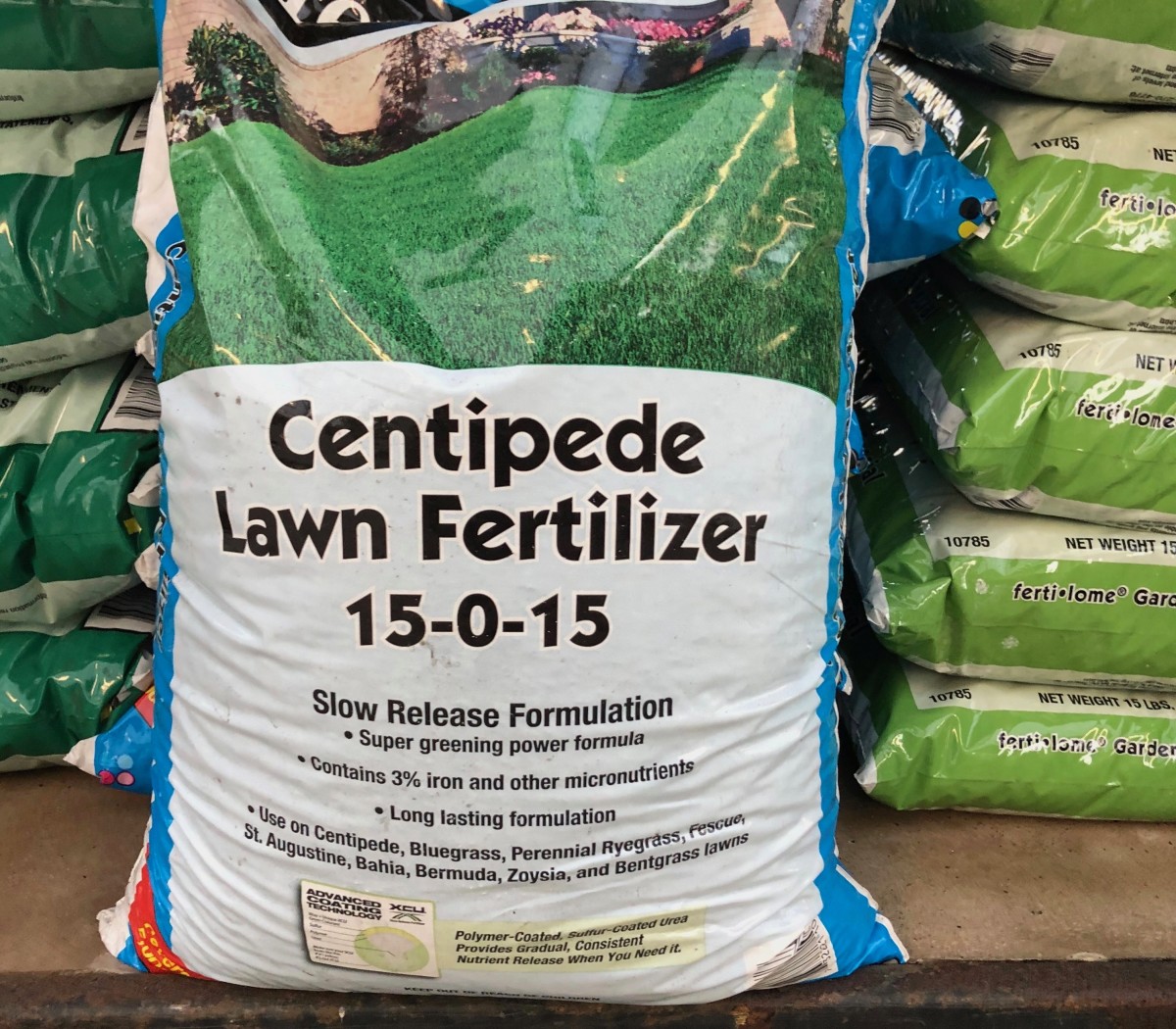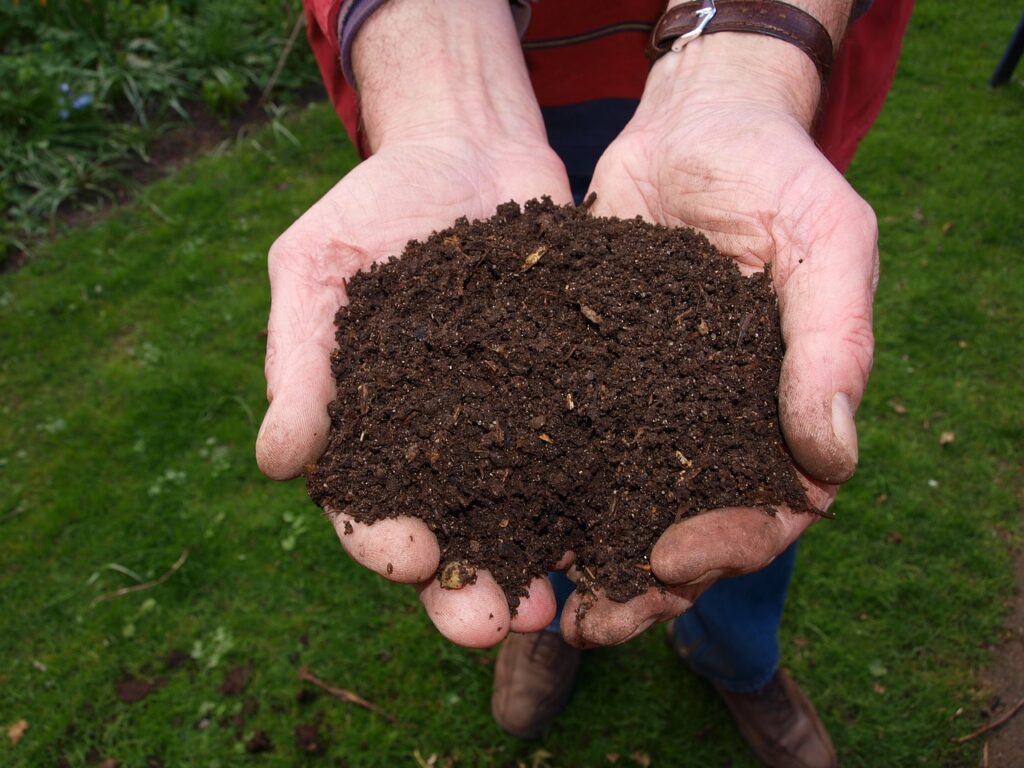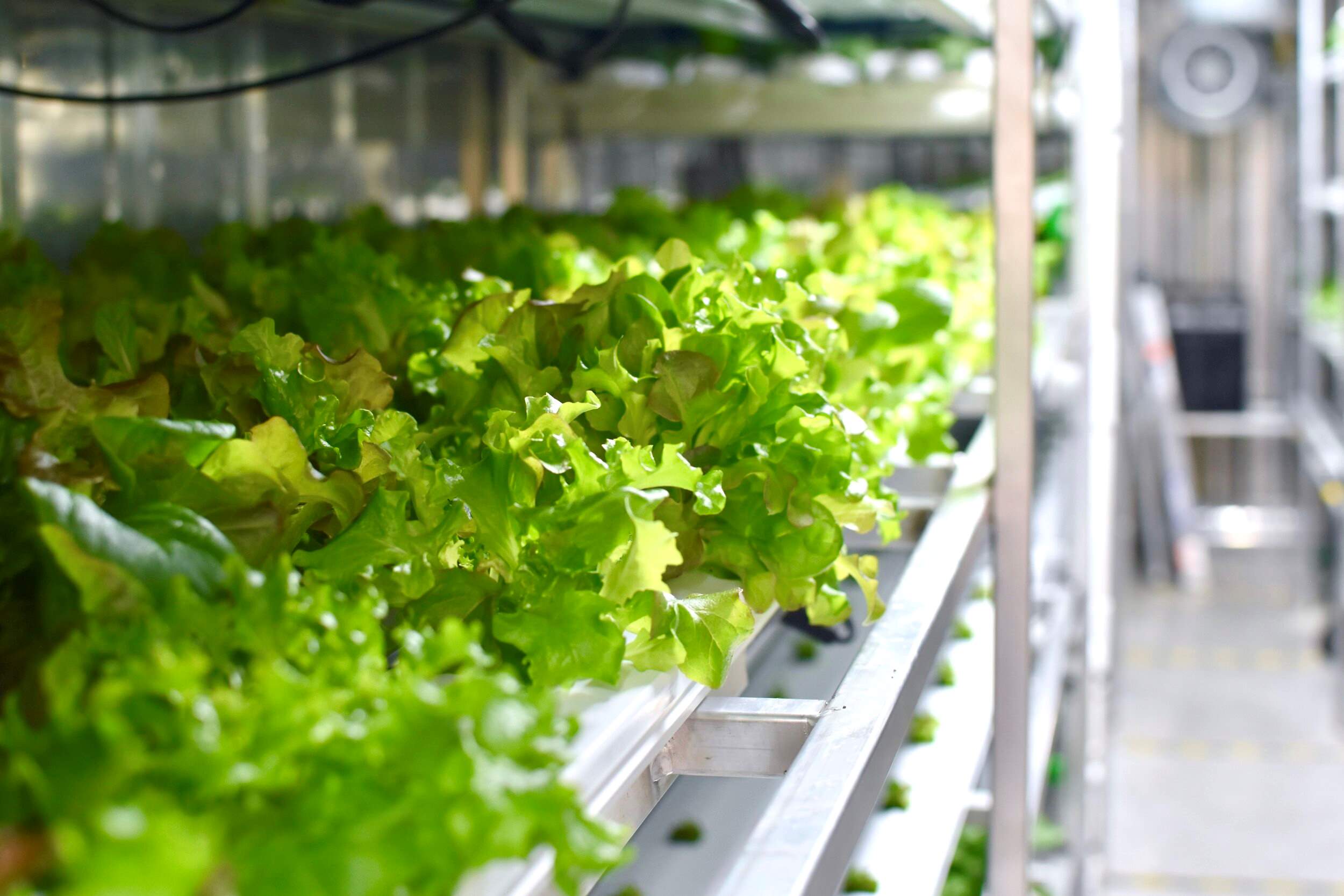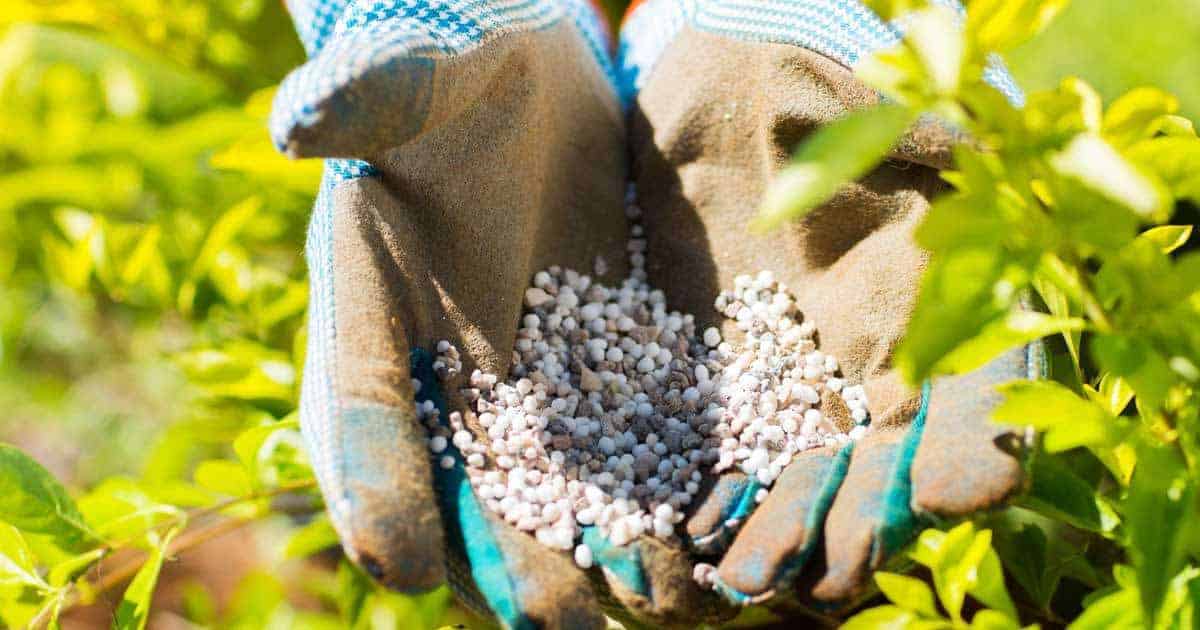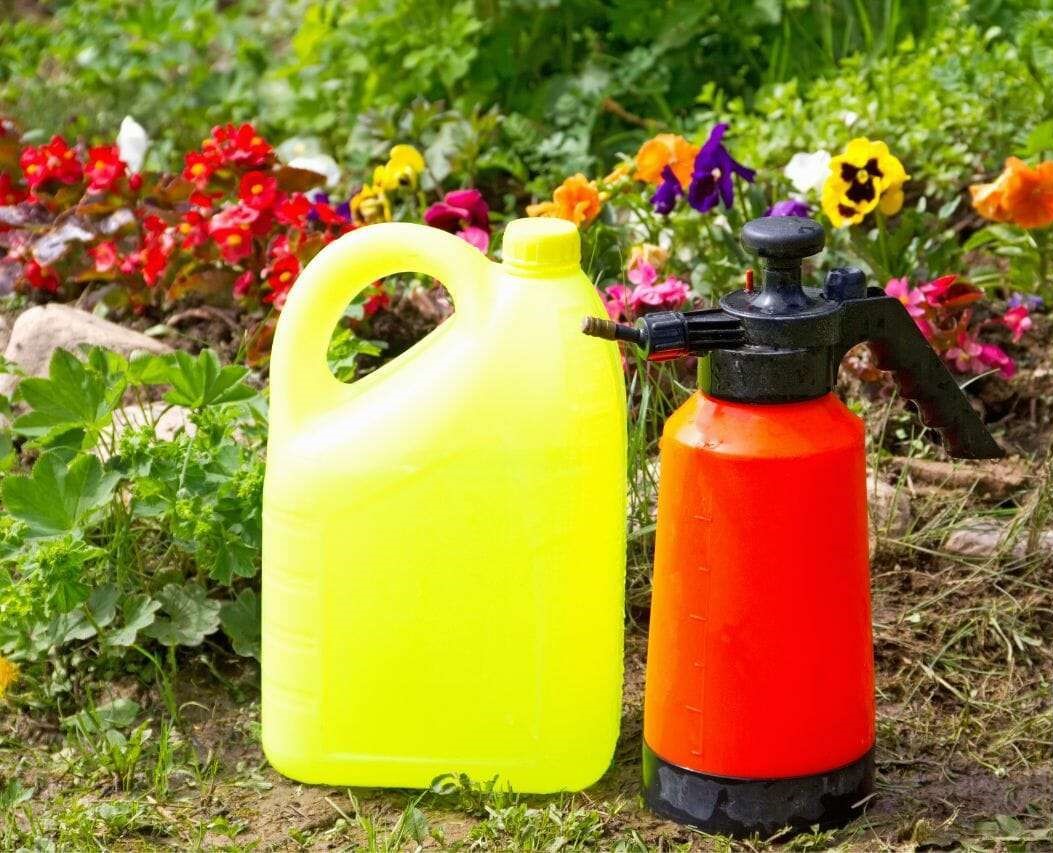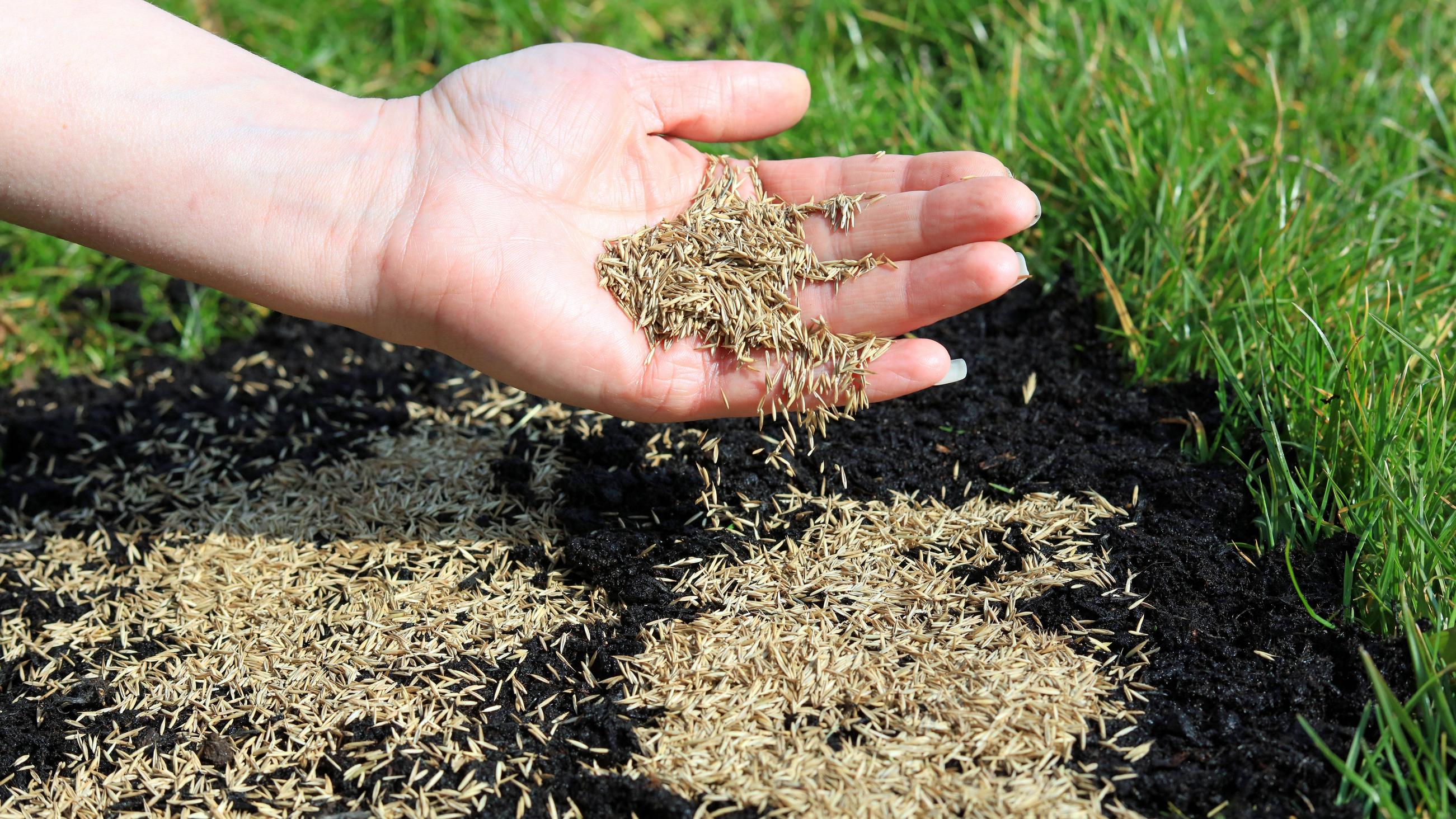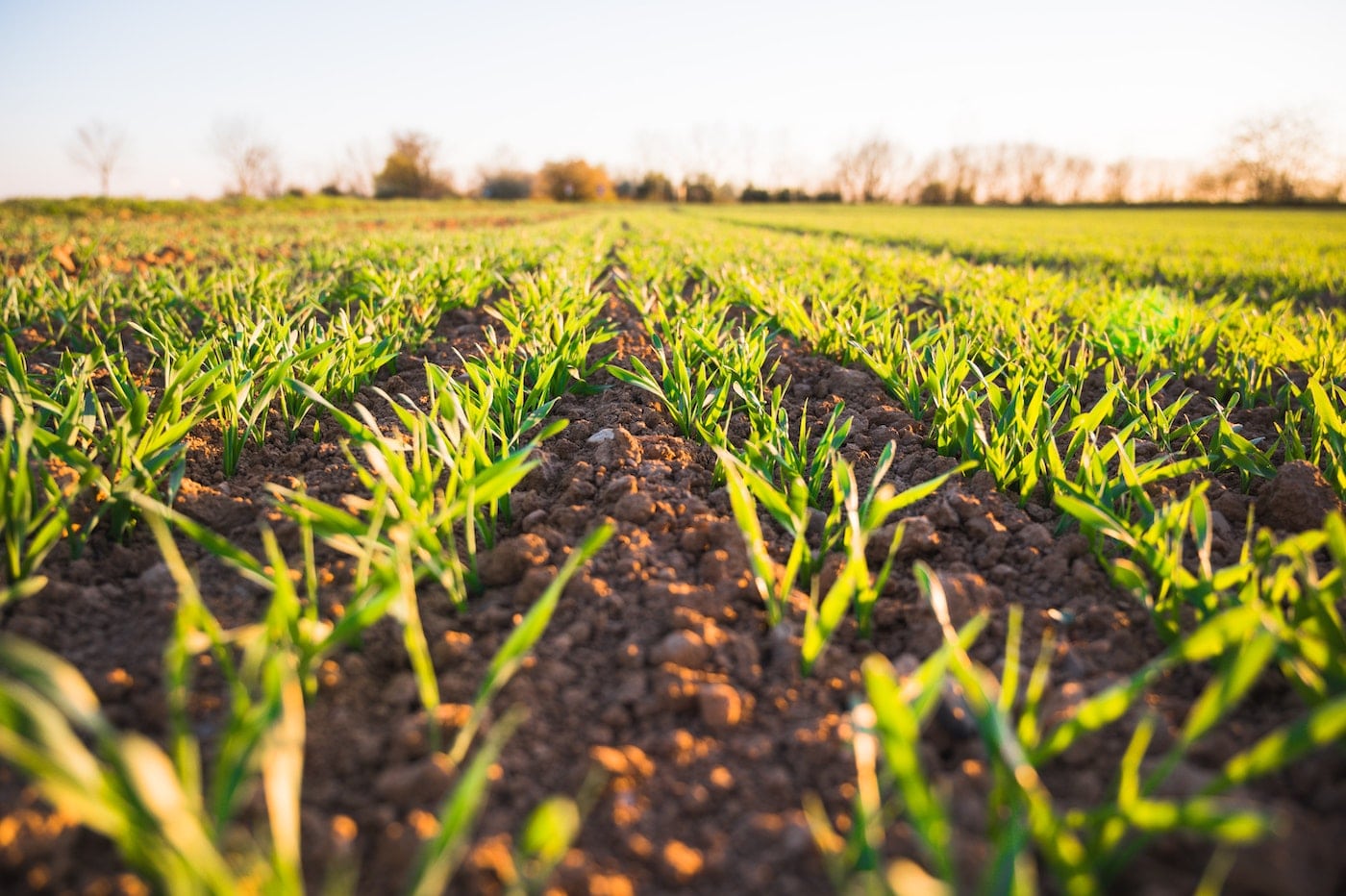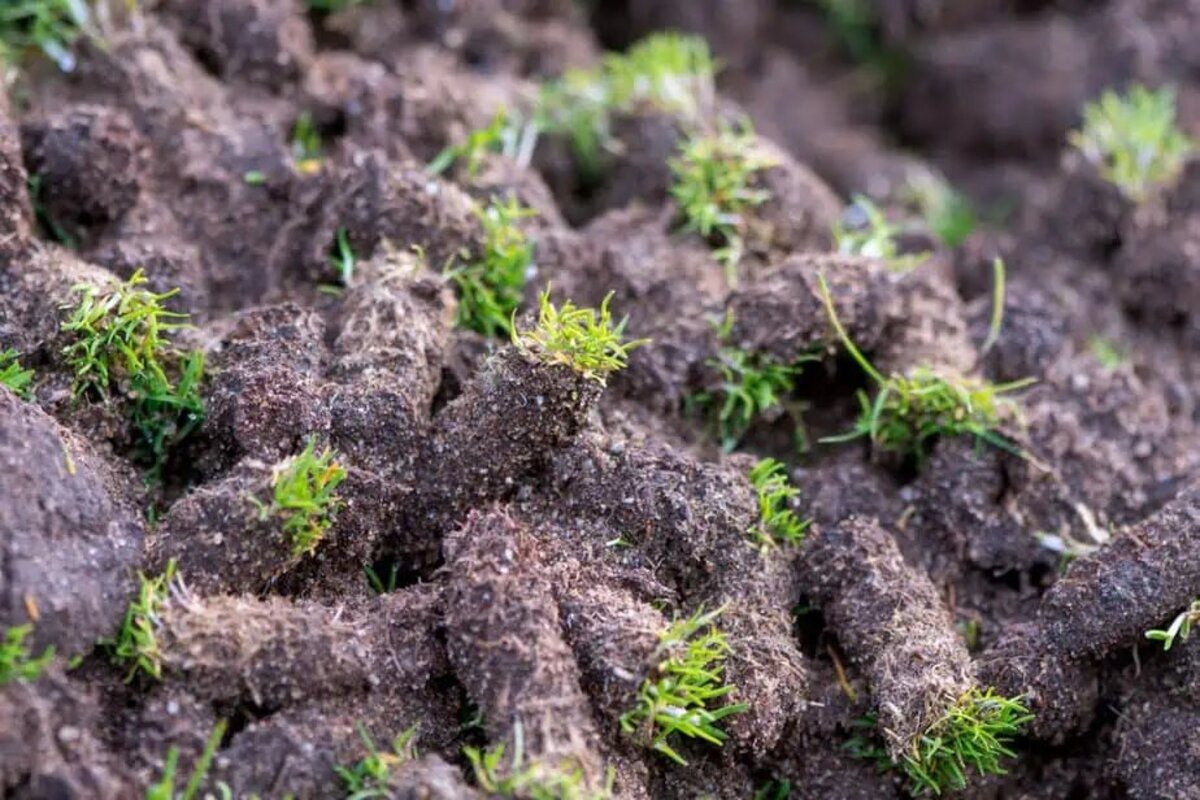Home>Gardening Tips and Tricks>Eco-Friendly Gardening>What Fertilizer To Use In Hydroponics
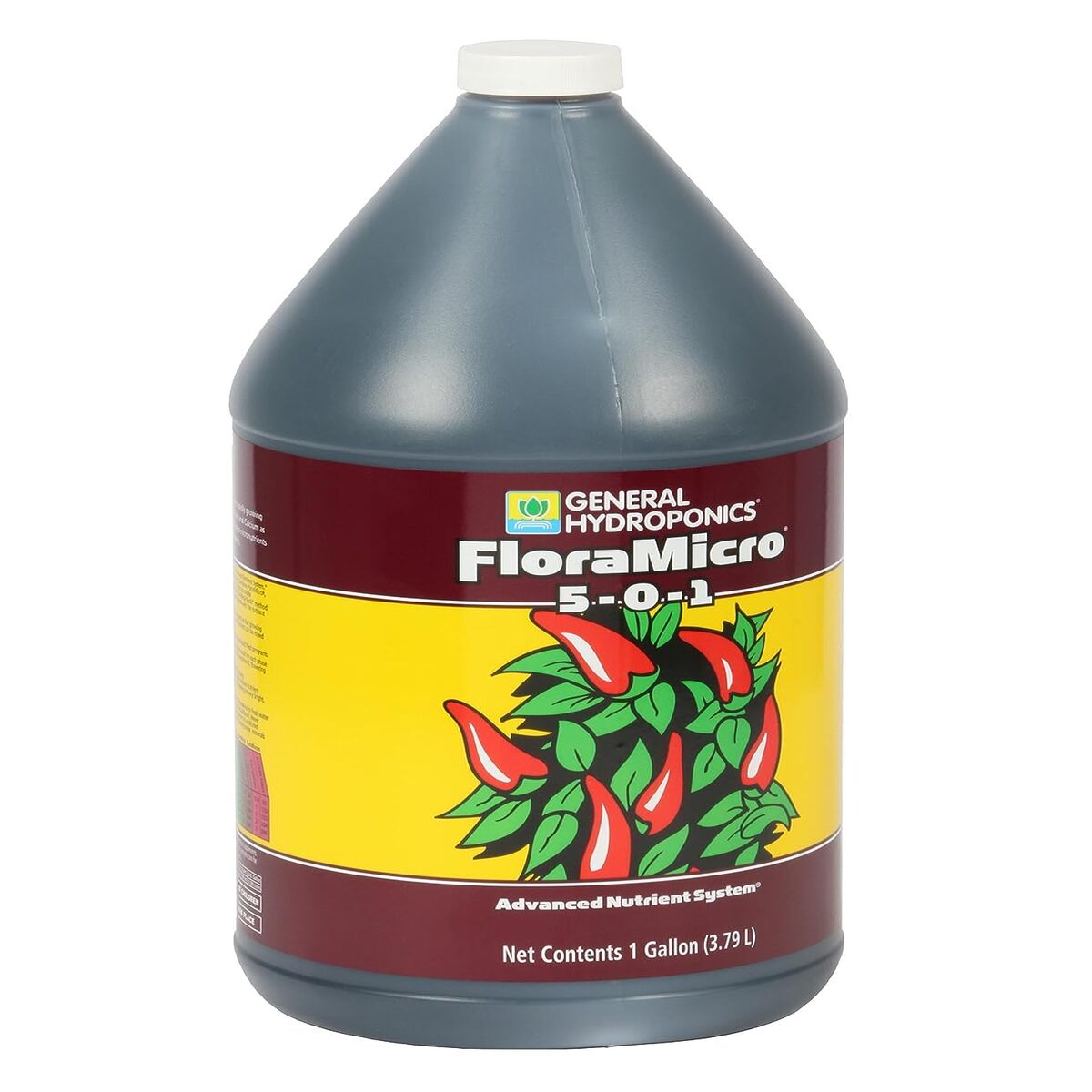

Eco-Friendly Gardening
What Fertilizer To Use In Hydroponics
Modified: January 22, 2024
Discover eco-friendly gardening techniques for hydroponics and find out which fertilizers are best suited to optimize your hydroponic system's growth and yield.
(Many of the links in this article redirect to a specific reviewed product. Your purchase of these products through affiliate links helps to generate commission for Chicagolandgardening.com, at no extra cost. Learn more)
Table of Contents
- Introduction
- Benefits of Using Hydroponics
- Understanding Hydroponic Fertilizers
- Factors to Consider When Choosing a Hydroponic Fertilizer
- Common Types of Hydroponic Fertilizer
- Organic vs. Synthetic Fertilizers in Hydroponics
- Nutrient Ratios in Hydroponic Fertilizers
- pH Balance in Hydroponic Fertilizers
- Best Fertilizers for Different Types of Hydroponic Systems
- Tips for Using Fertilizers in Hydroponics
- Conclusion
Introduction
Welcome to the world of eco-friendly gardening with hydroponics! If you’re passionate about growing plants in an environmentally conscious manner, hydroponics is the perfect solution for you. In traditional gardening, soil acts as a medium for plant growth, but in hydroponics, plants thrive in nutrient-rich water without the need for soil. This innovative gardening method not only conserves water and reduces the use of harmful chemicals but also allows you to grow plants all year round, regardless of climate conditions.
Hydroponics offers numerous benefits, making it a popular choice for both seasoned gardeners and beginners alike. By eliminating soil, hydroponic systems minimize the risk of pests, diseases, and weeds that often plague traditional gardens. This not only saves you time but also reduces the need for harmful pesticides. Additionally, hydroponics uses up to 90% less water compared to conventional gardening, making it an eco-friendly and sustainable choice.
One of the essential components of successful hydroponics gardening is the use of the right fertilizer. Unlike traditional gardening, where plants extract nutrients from the soil, in hydroponics, you have complete control over the nutrient intake of your plants. The right balance of essential nutrients ensures healthy growth, increased yields, and vibrant, nutrient-packed produce.
Choosing the appropriate hydroponic fertilizer can sometimes be overwhelming, given the vast array of options available. Organic or synthetic? Liquid or powdered? Nutrient ratios? pH balance? These are just a few factors to consider when selecting the right fertilizer for your hydroponic garden. In this article, we will guide you through the process of choosing the best fertilizer for your specific needs, providing you with the knowledge and confidence to embark on your eco-friendly gardening journey.
So, let’s dive into the world of hydroponic fertilizers and discover the possibilities they hold for greener and more sustainable gardening!
Benefits of Using Hydroponics
Hydroponics offers a range of benefits that make it an attractive option for eco-friendly gardeners. Here are some of the advantages of using hydroponics:
- Saves water: Hydroponic systems use up to 90% less water compared to traditional gardening methods. This is because the water in hydroponics is recirculated and reused, reducing water waste.
- Maximizes space: Hydroponics allows you to grow more plants in a smaller area. By eliminating the need for soil, you can set up vertical or stacked systems, maximizing the use of available space.
- Minimizes pests and diseases: Without soil, hydroponics significantly reduces the risk of pests, diseases, and weeds. This means you can spend less time dealing with harmful pests and more time enjoying the growth and development of your plants.
- Year-round gardening: With hydroponics, you have the ability to garden all year round, regardless of the external climate conditions. This is particularly beneficial for growing plants in areas with short growing seasons or extreme weather conditions.
- Optimized nutrient intake: In hydroponics, you have full control over the nutrient intake of your plants. This means you can provide the exact nutrients needed for optimal growth, resulting in healthier plants and higher yields.
- Reduced environmental impact: Hydroponics eliminates the need for synthetic fertilizers and pesticides, reducing the environmental impact of gardening. Additionally, by conserving water and maximizing space, hydroponics promotes sustainable and eco-friendly practices.
These benefits make hydroponics a versatile and efficient gardening method for both home gardeners and commercial growers. Whether you’re growing herbs, vegetables, or flowers, hydroponics offers a sustainable and time-saving solution that allows you to enjoy the rewards of gardening all year round.
Understanding Hydroponic Fertilizers
In hydroponics, fertilizers play a critical role in providing the necessary nutrients for plant growth. Unlike traditional gardening, where plants obtain nutrients from the soil, hydroponic plants rely entirely on the nutrient solutions provided by the grower. Understanding the basics of hydroponic fertilizers is essential to ensure the success of your garden.
Hydroponic fertilizers are specifically formulated to provide the essential macro and micronutrients that plants need to thrive. These nutrients include nitrogen (N), phosphorus (P), potassium (K), calcium (Ca), magnesium (Mg), and various trace elements. Depending on the growth stage of your plants, the nutrient requirements may vary. It is crucial to choose a fertilizer that provides the appropriate balance and concentration of these nutrients for optimal growth.
Hydroponic fertilizers are available in various forms, including liquid, powdered, and granular. Liquid fertilizers are the most common choice as they are easily absorbed by plants and allow for precise control of nutrient concentration. Powdered and granular fertilizers may require more preparation and monitoring but can also be effective for certain hydroponic systems.
It is also important to consider the nutrient ratios in hydroponic fertilizers. These ratios are typically represented as three numbers, such as 3-1-2, which indicate the concentration of nitrogen, phosphorus, and potassium respectively. The ideal nutrient ratio will depend on the specific needs of the plants you are growing.
Furthermore, hydroponic fertilizers should be pH balanced to ensure proper nutrient uptake. The pH level of the nutrient solution affects the availability and absorption of nutrients by the plant’s roots. Optimal pH levels for most plants range from 5.5 to 6.5, although certain plants may have slightly different pH requirements. Regular monitoring and adjustment of the pH in your hydroponic system are crucial to maintaining healthy plant growth.
Now that you have a basic understanding of hydroponic fertilizers, you are ready to explore the different types of fertilizers available and choose the one that best suits your specific hydroponic setup and plant requirements.
Factors to Consider When Choosing a Hydroponic Fertilizer
Choosing the right hydroponic fertilizer is crucial for the success of your garden. Here are some key factors to consider when selecting a fertilizer for your hydroponic system:
- Plant requirements: Different plants have varying nutrient requirements at different growth stages. Consider the specific needs of the plants you are growing and choose a fertilizer that provides the appropriate balance of macro and micronutrients.
- Fertilizer form: Hydroponic fertilizers are available in liquid, powdered, and granular forms. Liquid fertilizers are the most popular choice as they are readily absorbed by the plants. Powders and granules can also be effective, especially for specific hydroponic systems or when slow-release fertilization is desired.
- Nutrient ratios: The nutrient ratios in hydroponic fertilizers are represented by three numbers, indicating the concentration of nitrogen (N), phosphorus (P), and potassium (K). Research the ideal nutrient ratio for the plants you are growing and choose a fertilizer that matches those requirements.
- pH balance: The pH level of the nutrient solution affects the availability and absorption of nutrients by the plant’s roots. Ensure that the fertilizer you choose is pH balanced and can be easily adjusted to maintain the optimal pH range for your plants.
- Solubility: If using a powdered or granular fertilizer, consider its solubility in water. Some fertilizers may dissolve more easily, allowing for quick nutrient uptake by the plants, while others may require additional mixing or preparation.
- Quality and purity: Look for high-quality fertilizers that are free from impurities and contaminants. This ensures that your plants receive the best possible nutrients and reduces the risk of nutrient imbalances or deficiencies.
- Cost and availability: Consider your budget and the availability of the fertilizer. Some specialized hydroponic fertilizers may be more expensive or harder to find, while others may be more readily accessible and affordable.
By considering these factors, you can make an informed decision when selecting a hydroponic fertilizer. It’s important to regularly monitor the nutrient levels in your system and make any necessary adjustments to maintain optimal plant health and growth.
Common Types of Hydroponic Fertilizer
When it comes to hydroponic gardening, there are several types of fertilizers available, each with its own benefits and considerations. Here are some common types of hydroponic fertilizers:
- Complete Nutrient Solutions: These fertilizers contain all the essential macro and micronutrients in balanced ratios. They are formulated to provide everything your plants need for healthy growth and development. Complete nutrient solutions are available in liquid form and are ideal for beginners or those looking for a convenient and easy-to-use option.
- Two-Part Fertilizers: Two-part fertilizers consist of separate bottles of liquid nutrients, usually called “Part A” and “Part B.” These fertilizers allow you to customize the nutrient ratios according to the specific needs of your plants. This level of control is particularly beneficial for advanced hydroponic gardeners or those growing a wide variety of plants with different nutrient requirements.
- Organic Fertilizers: Organic hydroponic fertilizers are derived from natural sources such as plant material, animal waste, and mineral deposits. These fertilizers promote sustainable and eco-friendly gardening practices. They are available in liquid or powdered form and often require additional preparation or brewing. Organic fertilizers may provide slower release of nutrients but contribute to long-term soil health and microbial activity.
- Synthetic Fertilizers: Synthetic fertilizers are chemically manufactured and provide nutrients in highly concentrated forms. They are available in liquid or powdered form and are known for their fast-acting and immediate nutrient availability. Synthetic fertilizers are popular for their precision in nutrient control and are often used in commercial hydroponic operations.
- Slow-Release Fertilizers: Slow-release fertilizers are designed to provide a steady supply of nutrients over an extended period. They are ideal for plants that have low nutrient requirements or for gardeners who prefer a set-it-and-forget-it approach. Slow-release fertilizers are available in granular or pellet form and slowly release nutrients as they break down.
When choosing the type of hydroponic fertilizer, consider the specific needs of your plants, your gardening goals, and your level of gardening experience. It’s important to carefully follow the instructions and dosage recommendations provided by the manufacturer to avoid nutrient imbalances or toxicity.
Remember, finding the right hydroponic fertilizer might involve some trial and error as you discover what works best for your plants and growing conditions. Regular monitoring and adjustment of nutrient levels are essential for maintaining optimal plant health and achieving successful harvests in your hydroponic garden.
Organic vs. Synthetic Fertilizers in Hydroponics
When it comes to hydroponic gardening, one of the choices you’ll face is whether to use organic or synthetic fertilizers. Both options have their own advantages and considerations. Let’s explore the differences between organic and synthetic fertilizers in hydroponics:
Organic Fertilizers: Organic hydroponic fertilizers are derived from natural sources such as plant material, animal waste, and mineral deposits. These fertilizers promote sustainable and eco-friendly gardening practices. Here are some key points to consider:
- Slow-Release Nutrients: Organic fertilizers generally provide a slower release of nutrients compared to synthetic fertilizers. This slow release allows plants to absorb the nutrients gradually, reducing the risk of nutrient imbalances or toxicity.
- Soil Health: Organic fertilizers contribute to the long-term health and fertility of the growing medium, promoting beneficial microbial activity and improving soil structure.
- Environmental Impact: Organic fertilizers are considered more environmentally friendly as they are derived from natural sources and have minimal impact on water quality and ecosystem health.
- Complex Nutrient Profile: Organic fertilizers contain a wide range of micronutrients and trace elements that are beneficial for plant growth. This complex nutrient profile can help improve plant health and enhance the flavor and nutritional value of harvested produce.
Synthetic Fertilizers: Synthetic fertilizers are chemically manufactured and provide nutrients in highly concentrated forms. Here are some key points to consider:
- Immediate Nutrient Availability: Synthetic fertilizers are known for their fast-acting and immediate nutrient availability. This allows plants to quickly absorb nutrients and can result in rapid growth and development.
- Accurate Nutrient Control: Synthetic fertilizers offer precise control over nutrient ratios, allowing you to tailor the nutrient solution according to the specific needs of your plants.
- Higher Yield Potential: Synthetic fertilizers can provide plants with the optimal levels of nutrients required for maximum growth and yield potential.
- Less Space and Labor Intensive: Synthetic fertilizers often require less space for storage and are easier to handle compared to organic fertilizers, which may require additional preparation or brewing.
Ultimately, the choice between organic and synthetic fertilizers in hydroponics depends on your gardening goals, personal preferences, and environmental considerations. Some gardeners prefer organic fertilizers for their long-term soil health benefits and sustainability, while others opt for synthetic fertilizers for their precise control and immediate nutrient availability.
Regardless of the type of fertilizer you choose, regular monitoring of nutrient levels, pH balance, and overall plant health is crucial for successful hydroponic gardening. Remember to follow the manufacturer’s instructions and dosage recommendations to ensure proper plant nutrition and optimal growth in your hydroponic garden.
Nutrient Ratios in Hydroponic Fertilizers
The nutrient ratios in hydroponic fertilizers play a vital role in providing the essential elements for plant growth and development. Understanding these ratios is crucial for achieving optimal plant health and maximizing yields in your hydroponic garden.
Hydroponic fertilizers typically provide the three primary macronutrients: nitrogen (N), phosphorus (P), and potassium (K). The ratios of these nutrients are represented by three numbers on the fertilizer label, such as 3-1-2. Each number represents the percentage, by weight, of the nutrient in the fertilizer.
The specific nutrient ratios needed by your plants depend on their growth stage and nutritional requirements. Here are some general guidelines for nutrient ratios in hydroponic fertilizers:
- Nitrogen (N): Nitrogen is essential for lush, green foliage growth. It plays a vital role in protein synthesis, chlorophyll production, and overall plant vigor. Hydroponic fertilizers with higher nitrogen ratios, such as 3-1-2, are commonly used during the vegetative growth stage.
- Phosphorus (P): Phosphorus is crucial for root development, flowering, and fruiting. It plays a key role in energy transfer and promotes overall plant growth and reproductive functions. Hydroponic fertilizers with higher phosphorus ratios, such as 2-3-2, are commonly used during the fruiting and flowering stages.
- Potassium (K): Potassium is involved in various physiological processes like water regulation, disease resistance, and enzyme activation. It contributes to overall plant health and stress tolerance. Hydroponic fertilizers with higher potassium ratios, such as 2-1-6, are commonly used to promote overall plant growth and enhance fruit quality.
It’s important to note that different plants have varying nutrient requirements at different growth stages. It’s essential to research and understand the specific nutrient ratios needed by the plants you are growing in your hydroponic system.
Additionally, some hydroponic fertilizers may also provide secondary macronutrients like calcium (Ca) and magnesium (Mg), as well as micronutrients like iron (Fe), manganese (Mn), zinc (Zn), copper (Cu), and others. These micronutrients are required in smaller quantities but are equally important for the overall health and development of plants.
Regular monitoring of nutrient levels in your hydroponic system is essential to ensure that the nutrient ratios are appropriate for your plants’ needs. Leaf tissue analysis and pH monitoring can help identify any nutrient deficiencies or imbalances in your plants.
By understanding and managing nutrient ratios in your hydroponic fertilizers, you can provide your plants with the optimal balance of essential elements, leading to healthy and productive growth in your hydroponic garden.
pH Balance in Hydroponic Fertilizers
The pH balance is a critical factor to consider when using hydroponic fertilizers in your garden. The pH level refers to the degree of acidity or alkalinity of the nutrient solution. Maintaining the proper pH balance is essential for maximizing nutrient availability and promoting optimal plant growth in your hydroponic system.
Each plant has its own preferred pH range for optimal nutrient absorption. The general pH range for most plants in hydroponics is between 5.5 and 6.5. However, there may be variations in pH requirements depending on the specific crop you are growing.
The pH level affects nutrient availability to plants. When the pH is too high or too low, certain nutrients may become less accessible to the roots, leading to deficiencies or imbalances. This can inhibit plant growth and impact overall health and productivity.
There are two main approaches to managing pH balance in hydroponic systems:
- pH Adjustment: If the pH is too high (alkaline), you can lower it by adding an acid solution, such as phosphoric acid or nitric acid, to the nutrient solution. Conversely, if the pH is too low (acidic), you can raise it by adding an alkaline solution, such as potassium hydroxide or calcium carbonate.
- pH Buffering: pH buffering involves using materials that help maintain a stable pH level in the nutrient solution. This can be achieved by incorporating pH stabilizing compounds, such as pH buffers or pH stabilizing products, into the nutrient solution. These compounds provide a buffering effect, preventing drastic changes in pH caused by nutrient uptake or additive reactions.
To ensure proper pH balance, it is important to regularly monitor the pH level of your nutrient solution using pH testing kits or meters. Aim for a stable pH level within the optimal range for your specific plants.
It’s worth noting that different hydroponic systems may require different pH management approaches. For instance, certain systems like deep water culture may naturally have a tendency to drift towards higher pH levels, while others like nutrient film technique may require more frequent pH adjustments due to nutrient uptake and evaporation.
In addition to monitoring the pH of the nutrient solution, it’s a good practice to monitor the pH of the substrate or growing medium as well, especially in systems that use mediums like rockwool, coco coir, or perlite. The pH of the growing medium affects nutrient availability and root health.
By maintaining the proper pH balance in your hydroponic system, you ensure optimal nutrient uptake, promote healthy plant growth, and minimize the risk of nutrient deficiencies or imbalances in your plants. Regular monitoring and adjustment of pH levels are essential for a successful hydroponic garden.
Best Fertilizers for Different Types of Hydroponic Systems
When choosing fertilizers for your hydroponic system, it’s important to consider the specific needs and requirements of your chosen system. Different hydroponic systems have varying characteristics that influence the type of fertilizer that works best. Here are some recommendations for the best fertilizers for different types of hydroponic systems:
- Drip Systems: Drip systems deliver nutrient solutions directly to the roots of plants through drip emitters. For drip systems, liquid fertilizers with a balanced nutrient ratio work well. Look for fertilizers that are easily soluble and compatible with your water source. Two-part fertilizers or complete nutrient solutions are generally recommended for their convenience and ease of use.
- Nutrient Film Technique (NFT): NFT systems continuously flow a thin film of nutrient solution over the exposed roots of plants. Liquid fertilizers with a balance of nutrients are suitable for NFT systems. Additionally, consider using fertilizers with lower concentrations to prevent excess buildup in the constant flow of nutrient solution.
- Deep Water Culture (DWC): DWC systems suspend plant roots in oxygenated nutrient solutions. A two-part nutrient solution or a complete nutrient solution with a balanced nutrient ratio is commonly used in DWC systems. Look for fertilizers that provide sufficient oxygenation and are compatible with the specific needs of DWC.
- Aeroponics: Aeroponic systems mist nutrient solutions onto suspended plant roots, allowing for efficient nutrient uptake. In aeroponics, a complete nutrient solution with a balanced nutrient ratio and a fine misting nozzle for nutrient delivery are recommended. These fertilizers should be easily soluble to prevent clogging in the spray system.
- Wick Systems: Wick systems use a wick to draw nutrient solutions from a reservoir to the roots of plants. For wick systems, it is best to use liquid fertilizers with a balanced nutrient ratio and low viscosity. These fertilizers should be easily absorbed by the wick and provide efficient nutrient delivery to the plant roots.
- Media-Based Systems: Media-based systems, such as ebb and flow or flood and drain systems, use a growing medium to support plant roots while periodically flooding and draining the nutrient solution. Any type of hydroponic fertilizer can be used in media-based systems. However, it’s essential to choose a fertilizer that is compatible with the specific growing medium you are using.
It’s important to note that these are general recommendations, and adjusting nutrient levels and ratios may be necessary based on the specific needs of the plants you are growing. Additionally, always follow the manufacturer’s instructions for dosage and application rates when using fertilizers in your hydroponic system.
Regular monitoring of nutrient levels, plant health, and pH balance will help you determine if any adjustments need to be made to your fertilizer regimen. By selecting the appropriate fertilizer for your hydroponic system, you can provide your plants with the optimal nutrients they need for healthy growth and abundant yields.
Tips for Using Fertilizers in Hydroponics
Using fertilizers effectively in hydroponics is key to achieving optimal plant growth and yields. Here are some tips to help you make the most of your fertilizer regimen in hydroponics:
- Start with a Balanced Fertilizer: Begin with a balanced hydroponic fertilizer that provides all the essential nutrients your plants need. This ensures a solid foundation for healthy growth and development.
- Follow Manufacturer’s Instructions: Always read and follow the instructions provided by the fertilizer manufacturer, including recommended dosage, mixing ratios, and application frequency. Overfeeding or underfeeding can lead to nutrient imbalances and plant stress.
- Monitor Nutrient Levels: Regularly monitor the nutrient levels in your hydroponic system using electrical conductivity (EC) and pH meters, as well as visual inspection of plant health. Adjust the nutrient solution strength as needed to maintain the ideal nutrient concentration for your plants.
- Observe Plant Symptoms: Pay attention to any signs of nutrient deficiencies or excesses in your plants, such as yellowing leaves or stunted growth. Adjust the nutrient solution or fertilizer accordingly to address any imbalances.
- Cycle Nutrient Solution: To prevent nutrient buildup and maintain a healthy balance, cycle the nutrient solution by replacing it with fresh solution every two to three weeks. This helps prevent the accumulation of excess minerals and maintains a more favorable nutrient environment for the plants.
- Avoid Overwatering: In hydroponics, it’s crucial to maintain proper water and nutrient levels. Overwatering can lead to oxygen deprivation in the root zone and increase the risk of root rot. Follow appropriate watering practices to prevent waterlogging the growing medium.
- Adjust pH Regularly: Continuously monitor and adjust the pH of your nutrient solution to ensure that it remains within the optimal range for nutrient uptake. Regular pH monitoring helps prevent nutrient lockout and maximizes nutrient availability to the roots.
- Keep Fertilizer Storage Clean: Store your hydroponic fertilizers in a cool, dry place away from direct sunlight and moisture. Proper storage helps maintain the quality and effectiveness of the fertilizers over time.
- Maintain Hygiene: Practice good hygiene by regularly cleaning and sanitizing your hydroponic system to prevent the buildup of algae, bacteria, and other contaminants that can affect plant health and nutrient delivery.
- Experiment and Learn: Hydroponic gardening is a continuous learning process. Observe how different plants respond to various fertilizers and nutrient solutions. Keep records of your practices, make adjustments, and adapt your fertilizer regimen based on the needs of your plants.
By following these tips, you can ensure that your hydroponic fertilizers are used effectively, maximizing nutrient absorption, minimizing nutrient imbalances, and ultimately achieving successful and bountiful harvests in your hydroponic garden.
Conclusion
Hydroponic gardening offers an eco-friendly and sustainable way to cultivate plants without soil, allowing you to grow year-round, conserve water, and maximize space. With the right fertilizers, you can provide your plants with the essential nutrients they need for healthy growth and abundant yields.
When choosing hydroponic fertilizers, consider factors such as plant requirements, fertilizer form, nutrient ratios, pH balance, solubility, quality, and cost. Organic and synthetic fertilizers both have their own advantages, so choose based on your gardening goals and preferences.
Understanding nutrient ratios and maintaining the correct pH balance are crucial for optimizing nutrient uptake and plant health. Regular monitoring of nutrient levels, pH, and plant symptoms will guide you in adjusting fertilizers and maintaining a healthy nutrient environment in your hydroponic system.
Different types of hydroponic systems require specific fertilizers. Choose fertilizers that are compatible with your chosen system, such as complete nutrient solutions for drip systems and two-part fertilizers for more precise control in NFT systems.
When using fertilizers in hydroponics, follow manufacturer’s instructions, monitor nutrient levels, cycle the nutrient solution, adjust pH regularly, practice good hygiene, and keep fertilizer storage clean. Experimentation and learning from your plants’ responses will help you fine-tune your fertilizer regimen and achieve successful outcomes.
By incorporating these practices and tips, you can create a thriving and productive hydroponic garden that provides you with fresh, healthy, and nutrient-rich produce throughout the year, all while minimizing environmental impact and enjoying the rewards of eco-friendly gardening.
